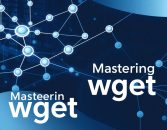The Digital Gold Rush: Understanding Web Scraping‘s Transformative Power
Imagine having the ability to transform the vast, chaotic internet into a structured, actionable intelligence platform. Welcome to the world of web scraping—a technological marvel that‘s reshaping how businesses, researchers, and innovators understand digital information.
Web scraping isn‘t just a technical process; it‘s a strategic approach to extracting valuable insights from the digital landscape. As someone who has spent years diving deep into the intricate world of data extraction, I‘ve witnessed firsthand how this technology can revolutionize decision-making across industries.
The Evolution of Data Extraction
The journey of web scraping begins long before the internet as we know it today. In the early days of computing, data extraction was a manual, time-consuming process. Researchers and analysts would spend countless hours combing through physical documents, transcribing information by hand. The digital revolution changed everything.
By the late 1990s, the first web scraping tools emerged, primitive by today‘s standards but revolutionary for their time. These early scripts were simple, often breaking with complex website structures and lacking the sophistication of modern extraction techniques. Fast forward to 2024, and we‘re looking at a completely transformed landscape of data collection technologies.
Technical Architecture: The Backbone of Modern Web Scraping
At its core, web scraping is a complex dance of technologies working in perfect harmony. Imagine a sophisticated robot navigating the intricate maze of the internet, precisely extracting the information you need while avoiding detection.
The Extraction Mechanism
Modern web scraping relies on multiple technological components:
Request Management: Your scraper initiates communication with target websites, sending HTTP/HTTPS requests that mimic human browsing behavior. This isn‘t just about sending a request—it‘s about creating a sophisticated digital persona that appears completely natural.
HTML Parsing: Once the request is successful, the scraper deconstructs the webpage‘s HTML structure. Using advanced libraries like Beautiful Soup and Scrapy, it identifies and extracts specific data elements with surgical precision.
Data Transformation: Raw extracted data undergoes immediate processing, converting unstructured web content into clean, structured datasets ready for analysis.
Proxy Technologies: The Invisible Shield
Proxy technologies represent the most critical defense mechanism in advanced web scraping. These aren‘t just IP addresses—they‘re sophisticated tools that create complex digital identities, allowing scrapers to move undetected through web landscapes.
Residential proxies, sourced from real internet service providers, offer the highest level of anonymity. Imagine having access to millions of genuine IP addresses from around the world, each with its own unique browsing history and characteristics. This isn‘t just about hiding—it‘s about creating a completely believable digital presence.
Legal and Ethical Considerations: Navigating the Gray Areas
Web scraping exists in a complex legal ecosystem. The 2023 Meta vs. Bright Data case highlighted the nuanced nature of data extraction legality. Courts are increasingly recognizing that publicly accessible data shouldn‘t be artificially restricted, even when accessed through sophisticated technological means.
Ethical Framework
Responsible web scraping isn‘t just about technical capability—it‘s about maintaining a strict ethical framework:
- Respect website terms of service
- Avoid extracting copyrighted content
- Implement rate limiting to prevent server overload
- Maintain transparency about data collection methods
Industry Applications: Real-World Impact
Web scraping isn‘t an abstract technological concept—it‘s a practical tool transforming multiple industries:
E-commerce Intelligence
Imagine being able to track competitor pricing in real-time, understanding market dynamics with unprecedented clarity. E-commerce companies use web scraping to:
- Monitor competitor pricing strategies
- Track product availability
- Analyze market trends
- Develop dynamic pricing models
Financial Technology
In the high-stakes world of financial markets, information is power. Web scraping enables:
- Real-time stock market analysis
- Cryptocurrency market tracking
- Sentiment analysis of financial news
- Competitive intelligence gathering
Digital Marketing
Marketing teams leverage web scraping to:
- Generate high-quality leads
- Track social media trends
- Analyze competitor content strategies
- Develop targeted marketing campaigns
Advanced Technological Strategies
Anti-Detection Techniques
Modern websites employ sophisticated bot detection mechanisms. Successful scrapers must:
Randomize user agents to appear like different browsers
Implement intelligent request timing that mimics human browsing patterns
Use rotating proxy networks to distribute requests
Implement sophisticated fingerprint management techniques
Future Trends: The Next Frontier
As we look toward the future, web scraping is becoming increasingly integrated with artificial intelligence and machine learning. Imagine scrapers that can not just extract data, but understand context, predict trends, and generate insights autonomously.
The global web scraping market is projected to reach [USD 4.8 Billion] by 2027, demonstrating the massive potential of this technology.
Investment Perspective
For forward-thinking investors and technologists, web scraping represents more than a tool—it‘s a strategic asset. Companies investing in sophisticated data extraction technologies are positioning themselves at the forefront of the digital intelligence revolution.
Conclusion: Your Gateway to Digital Intelligence
Web scraping is more than a technical process—it‘s a strategic approach to understanding the digital world. By mastering these technologies, you transform raw internet data into actionable intelligence.
Are you ready to unlock the power of web data?






